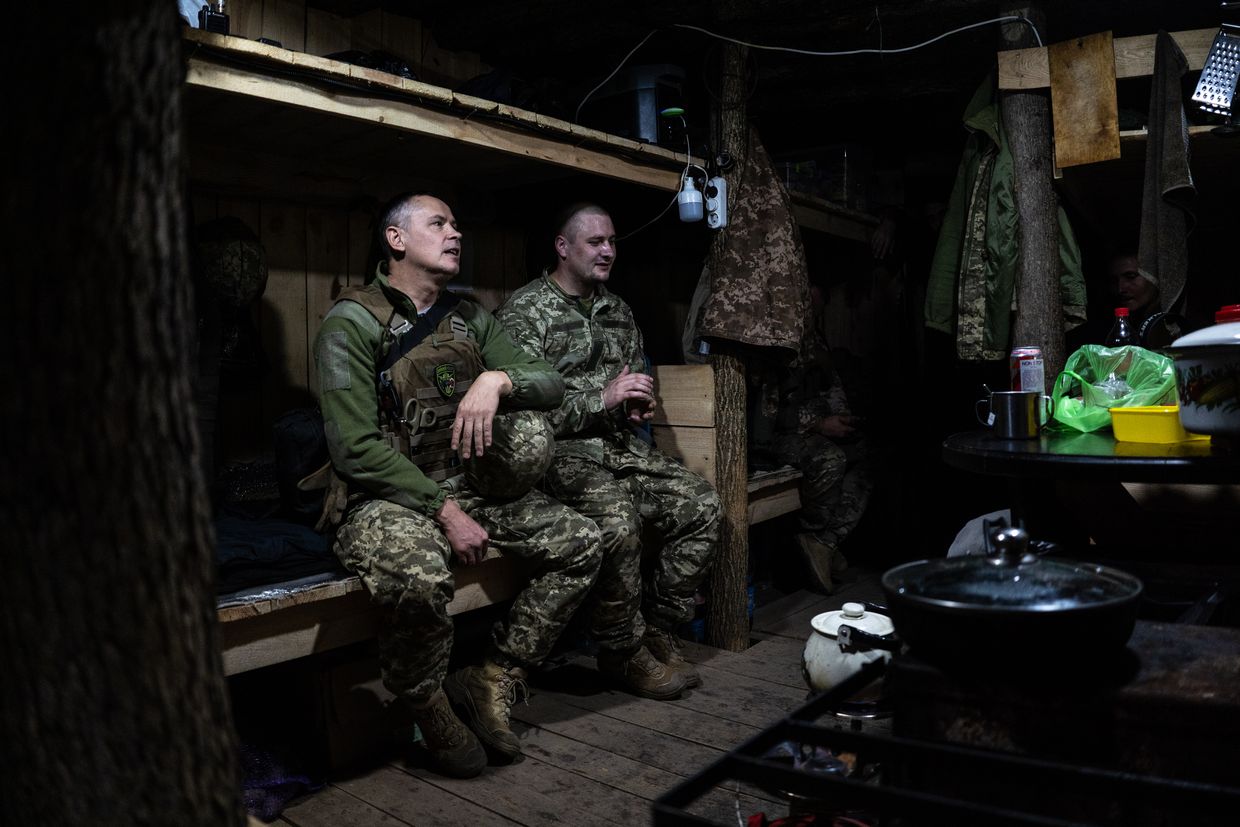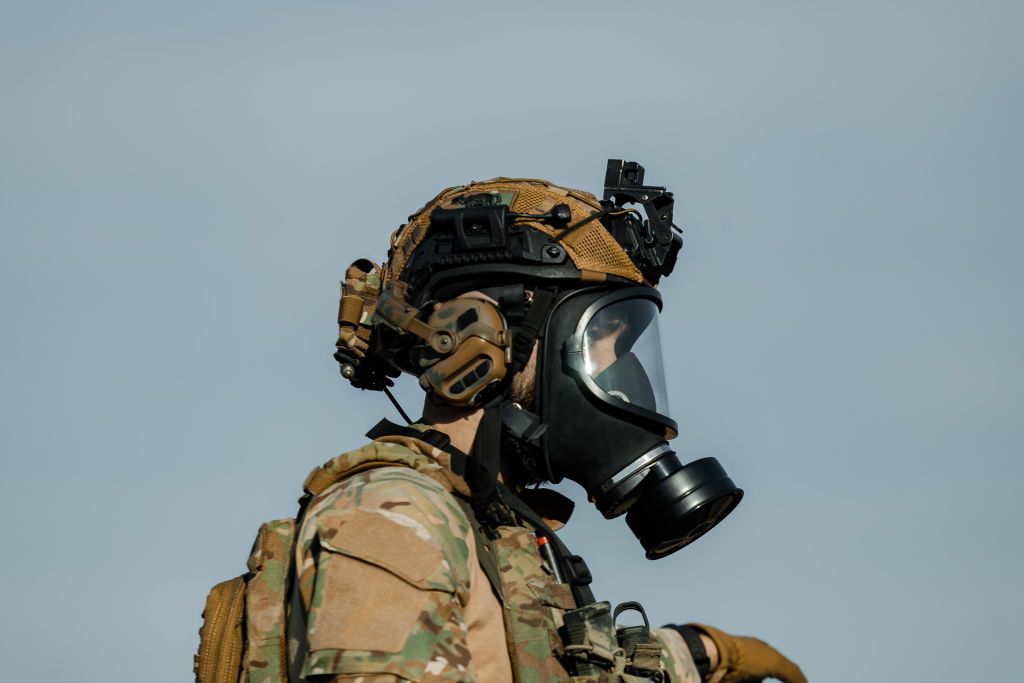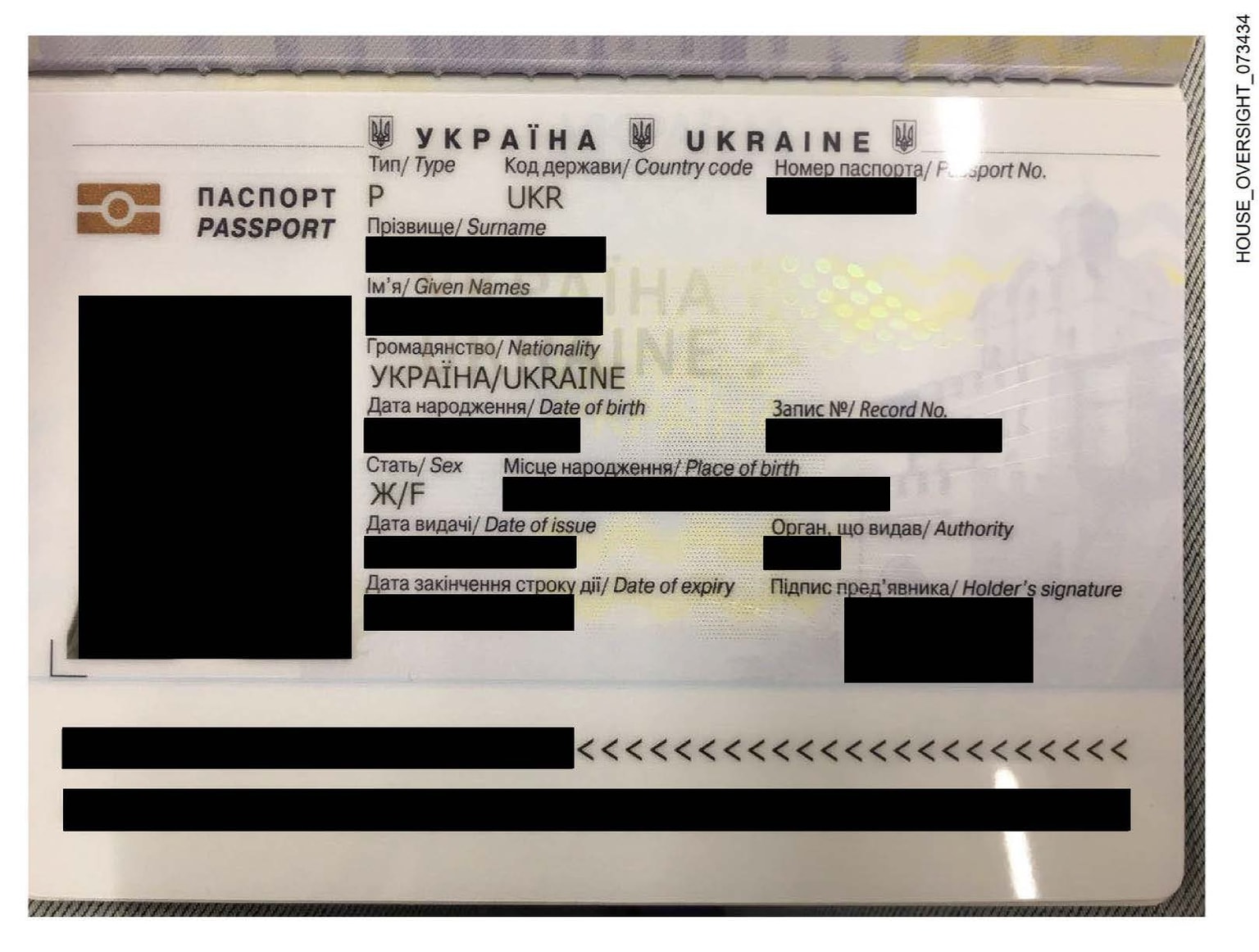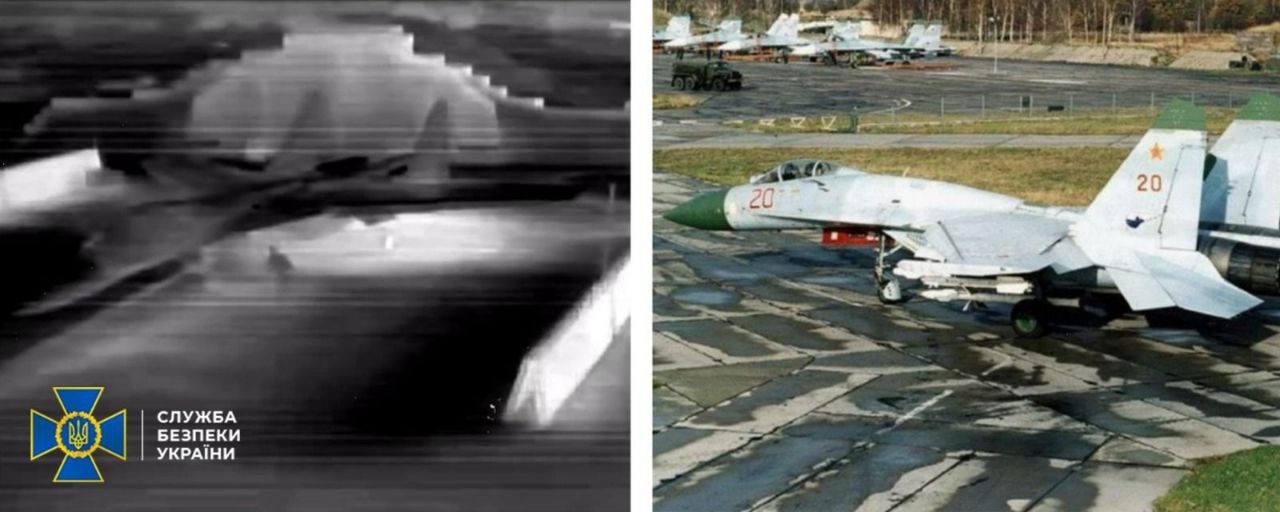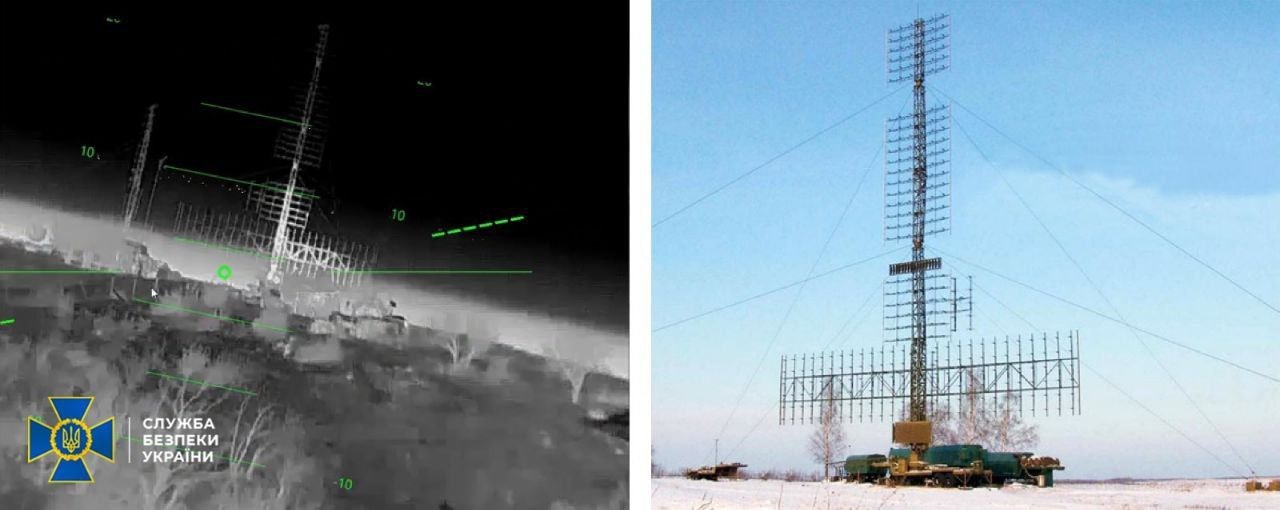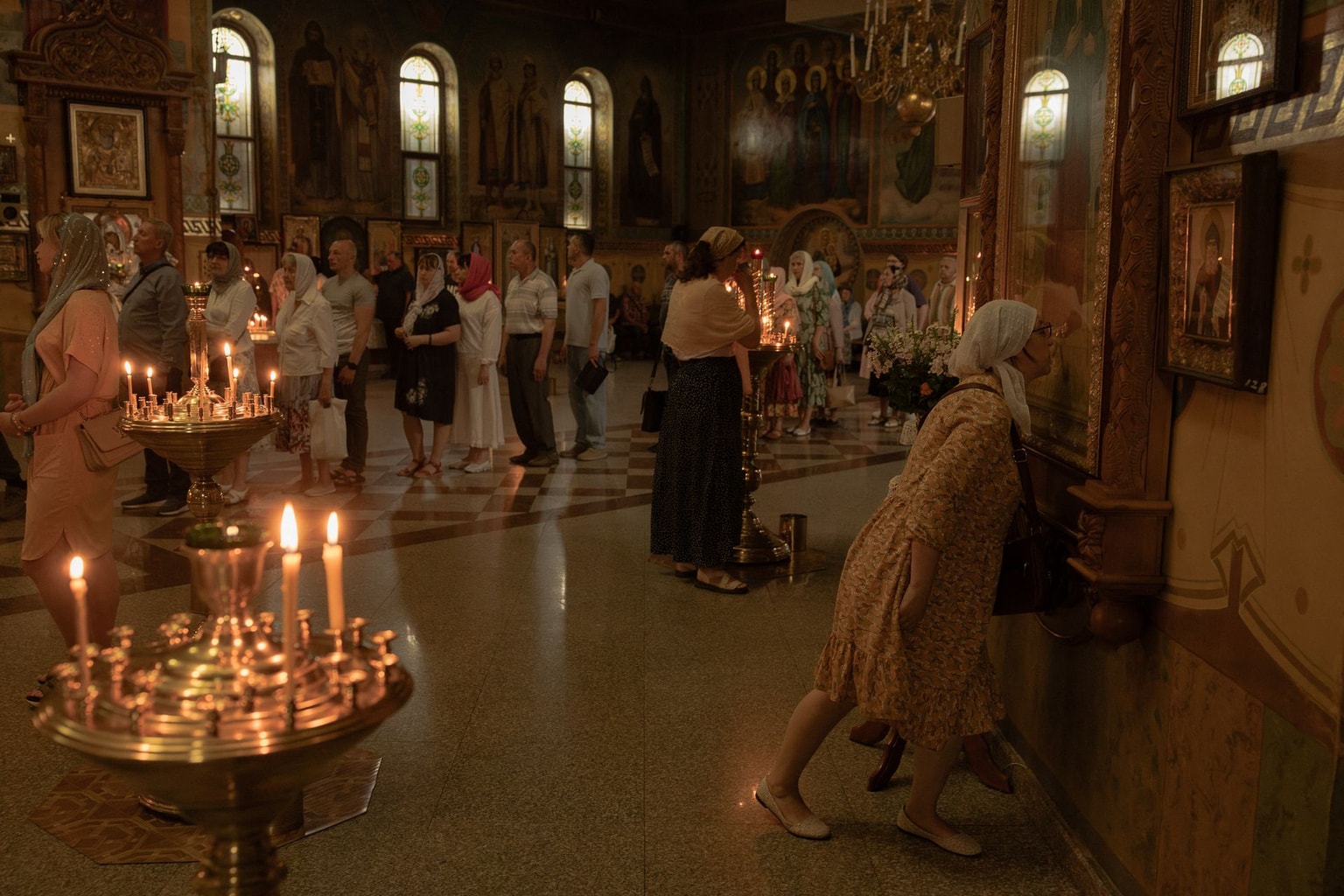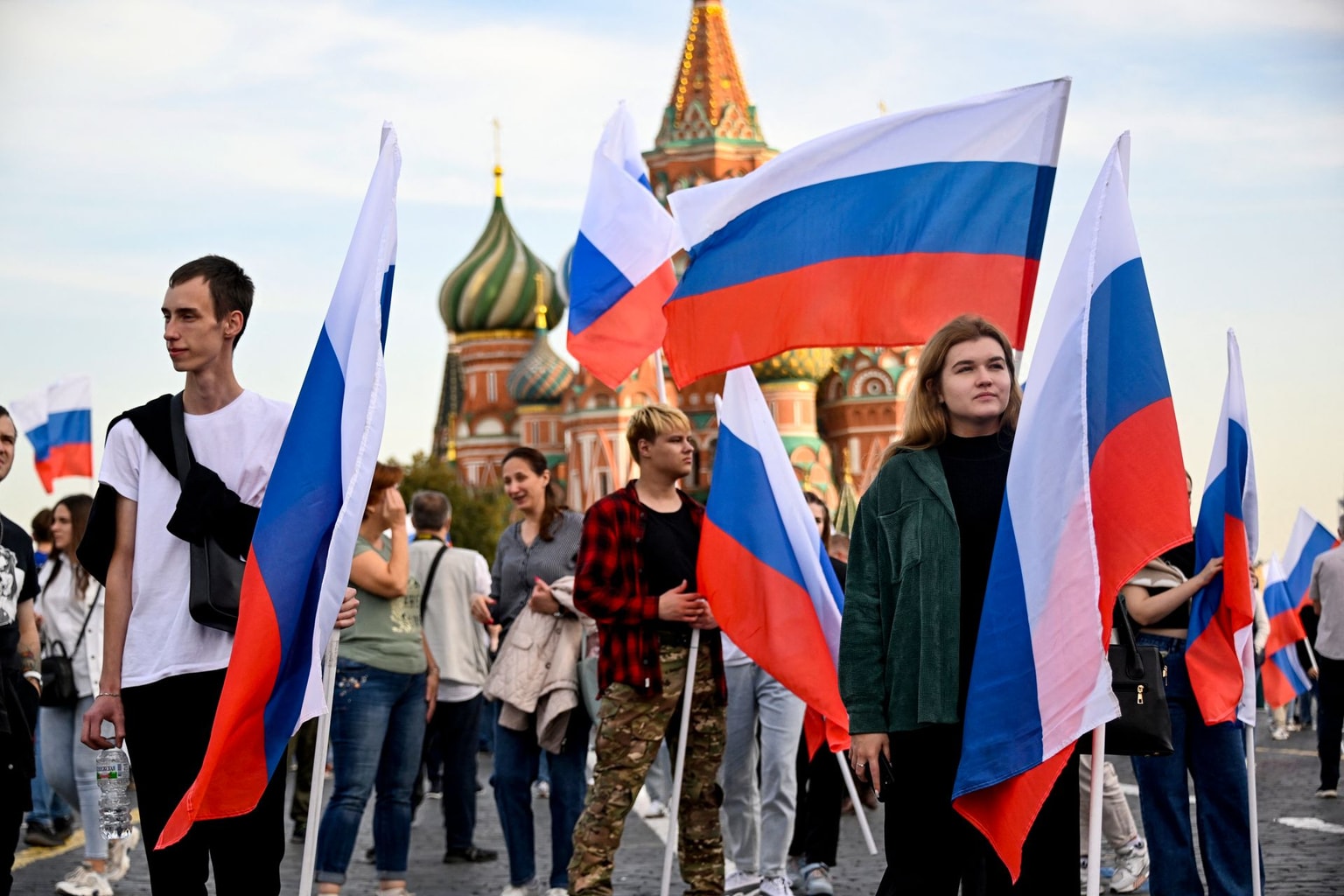
Ukraine ends year battered, with Russian troops pushing north, east, and south
Soldiers fire a 2C1 "Carnation" - Soviet 122-mm regimental self-propelled artillery installation, the world's first serial floating tracked self-propelled gun in Toretsk district, Donetsk Oblast, Ukraine on July 31, 2024. (Kostiantyn Liberov/Libkos/Getty Images)
The entire year 2024 saw Ukrainian troops on the back foot, losing territory to the advancing Russian troops in northeastern Kharkiv Oblast and eastern Donetsk Oblast.
Russia captured Avdiivka — an industrial city in Donetsk Oblast — in February, kickstarting Moscow's offensives all across the region.
Taking advantage of a poorly conducted rotation of Ukrainian units, Russian troops launched a push toward Toretsk and Niu-York, towns in the mid-part of Donetsk Oblast that used to enjoy little engagement.
Russia continued to gain ground on the eastern part of the region over the summer, gradually approaching Pokrovsk, Kurakhove, and Vuhledar.
Vuhledar was captured in October. Experts say that Russia could capture Pokrovsk within "months."
North of Kharkiv, Ukraine's second-largest city, Russia launched a surprise offensive in May, further stretching Ukrainian troops who had already struggled to hold onto the current lines.
The country is now ending the year with an unsolved manpower shortage, a looming defeat in several key battles, and little prospect of changing the situation on the battlefield.
Despite being outmanned and outgunned across the front, Ukraine boldly launched a cross-border incursion into Russia's Kursk Oblast in August. As of December, Ukraine controls less than half of the territory initially gained and is preparing for a looming Russian counteroffensive that will involve North Korean troops.
Kursk Oblast
Up north, Ukrainian troops are continuing to hold ground in Russia's Kursk Oblast. Meanwhile, Russian troops have conducted a few attempts to retake the parts of the region held by Ukraine since Aug. 6.
Some of the roughly 12,000 North Korean troops deployed in Kursk Oblast have participated in assault missions, according to a senior Ukrainian official familiar with the intelligence.
A senior General Staff official told Reuters in late November that Ukraine had lost over 40% of the territory it previously captured in Kursk Oblast.
Forcing Ukrainian troops out of the narrow foothold they control in Kursk Oblast remains Moscow's focus, the Ukrainian official briefed with intelligence said.


Russian troops' proximity to the town of Sudzha, which is an important supply hub for Ukrainian troops in the area is "concerning" due to rising logistic and encirclement threats, according to John Hardie, deputy director of the Russia Program at the Foundation for Defense of Democracies.
Russian troops are merely a few kilometers from Sudzha, according to the Ukrainian crowd-sourced monitoring website DeepState.
With the Ukrainian-occupied Kursk Oblast foothold being "fairly narrow," the toll of Russian glide bombs and artillery are having an effect, and casualties could increase over winter when it becomes easier to be spotted from above, Hardie said.
As of December, Ukraine controls less than 500 square kilometers of Kursk Oblast, which is roughly the size of Chicago, according to Paroinen from the Black Bird Group.
Kharkiv Oblast
Northeastern Kharkiv Oblast is torn by a major battle north of Kharkiv, the second largest city in the country, and another one surrounding the city of Kupiansk, in the eastern part of the region.
The front line north of Kharkiv stabilized in the summer after Russia launched an offensive in May in an attempt to capture the city of Vovchansk, held by Russia for six months in 2022. While the initial pace was quick, Moscow was unable to fully recapture the town of Vovchansk and advance toward Kharkiv.
Paroinen from the Black Bird Group said that he doesn't expect Russia to make significant advances in the Vovchansk axis in the coming months since it would likely want to dedicate more resources to Donetsk Oblast, located east. He added that Russia had also allocated a substantial number of troops from the area to defend Kursk Oblast further north in Russia.


About a two-hour drive southeast of Vovchansk lies the city of Kupiansk, which was also under Russian occupation in 2022. The front line there has remained stable for months, before Russia intensified its push in late November — in what Ukrainian soldiers described as a tactic to prevent Ukraine from deploying units elsewhere.
Russian troops briefly entered the town's outskirts before being pushed back days later.
Russia has only managed to secure "minimal gains" toward Kupiansk, according to the expert.
Paroinen said that a more concerning situation in Kharkiv Oblast is unfolding around the town of Borova in the southeastern part of the region and close to Donetsk Oblast. Russia has begun new attacks from the Russian-occupied town of Svatove across the Oskil River.
"I would watch the direction of Borova very closely, and also, if the Russians are able to restart any sort of major push towards Kupiansk," he added.
Donetsk Oblast
In the northern part of Donetsk Oblast sits the Serebryansky forest, largely charcoaled and severely ruined after years of heavy fighting in the area. Russia has held the initiative on the front line near the Russian-occupied town of Kreminna in the nearby Luhansk Oblast and continues to pressure the Ukrainian defense there.
Roughly 50 kilometers south of the forest rages on the battle for Chasiv Yar, a hilly town now partially occupied by Russian troops. Ukraine is trying to hold onto it at all costs after it was forced to withdraw from the ruins of Bakhmut — about 10 kilometers eastward – in May 2023.
Russian forces have advanced past the Siverskyi Donets-Donbas canal, which is running through the city this autumn. They are trying to surround the town from the north and the south.
Chasiv Yar is connected to another important city in Donetsk Oblast, Pokrovsk, via the T0504 highway. This highway has long been a key logistic route connecting the upper and lower parts of Donetsk Oblast until an unexpected Russian breakthrough in the southwestern part of the city made the highway obsolete.
Pokrovsk, a city that spent most of the war being a logistics hub in the rear, is now the main focus point of advancing Russian troops. After capturing the village of Shevchenko, Russian troops are standing 3-4 kilometers east and south of the city, once home to over 60,000 people.


Russian troops appear to be trying to "wrap around" Pokrovsk from the southwest to cut the roads entering the city, according to Hardie, the deputy director at the Foundation for Defense of Democracies.
"That's often how they try to take some of these cities in the past basically by gulping it and avoiding a head-on assault," Hardie said, adding that Pokrovsk's possible fall is a matter of months, not weeks.
"Russians would likely advance westward on the lower flank of Pokrovsk and capture the Kurakhove area to build "a wide enough position to truly start attacking toward Pokrovsk," Paroinen said, adding that he expects the battle for Pokrovsk to start mid or late January.
The Kurakhove axis just south is key for Moscow to prepare for the battle for Pokrovsk, where Russian troops are pressing from three sides.
Russian troops often semi-encircle Ukrainian troops to capture certain land, which is usually enough to cause significant problems because it becomes difficult to bring in supplies, reinforce the positions, and evacuate the wounded, Paroinen said.

"Ukrainian forces are refusing to pull back like they are fighting for every inch of the terrain, that means that they are constantly fighting from very disadvantageous positions," he added.
The situation around the town of Velyka Novosilka, 55 kilometers south of Pokrovsk, is getting worse as well, according to experts. If Russia manages to advance from the village of Staromaiorske to the south and Rivnopil to the southwest, it could "isolate the village from pretty much all sides," according to Paroinen.
Velyka Novosilka is Russia's main target in the southern part of the region following Moscow's capture of Vuhledar, a mining town that has been a Ukrainian stronghold since 2022.
Zaporizhzhia Oblast
Much like Kharkiv Oblast, the front-line situation in southeastern Zaporizhzhia Oblast remains rather stable despite the Ukrainian military's repeated warnings about a potential new Russian push in the area.
In the areas further west of Donetsk Oblast where Ukraine attempted to wage a counteroffensive in 2023 on the Orikhiv axis, Russian troops are unlikely to commit to a larger operation, according to Paroinen.

Kherson Oblast
Further south, Russia has increased its aerial attacks against the Ukraine-controlled part of Kherson Oblast, including the regional capital. Yet, divided by Dnipro River, which is kilometers wide, there's no signs that either side would dare to conduct a river-crossing operation.
Ukraine is trying to hold onto its limited foothold in the Dnipro River islands. Both sides have been willing to continue fighting over this difficult terrain in the Dnipro River delta, which has little strategic value. The battle is "a bizarre aspect of this war."

In the winter of 2023, Ukrainian soldiers spoke up to the Kyiv Independent about how a number of their comrades were killed in a mission they believed had no prospects. Severely lacking crucial resources from ammunition and drones to boats, the Ukrainian soldiers crossing the river called the mission "suicidal."
It is unlikely that Russia would launch an offensive across the Dnipro to get to the Ukrainian-controlled western bank of the river because it would be "a very big gamble," in a similar way Kyiv's troops suffered heavy casualties in 2023, according to Paroinen.

Note from the author:
Hi, this is Asami Terajima, the author of this article.
Thank you for reading our story. 2024 was a bloody and tough year for Ukrainian soldiers on the front line. Everywhere I went, I saw exhaustion and pain, and the least I can do is write about the men and women at the front and every aspect of this war.
To help the Kyiv Independent tell more stories that would otherwise not be told, please consider supporting us by becoming our member.

